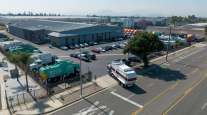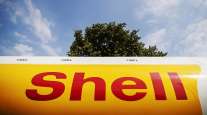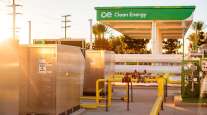New Engine to Spur Use of Nat Gas as Trucking Fuel, Panelists Predict
This story appears in the Dec. 10 print edition of Transport Topics.
ARLINGTON, Va. — The use of natural gas in Class 8 freight-hauling trucks should begin in earnest next year with the introduction of an engine suitable for heavy-duty loads, according to a panel of original equipment manufacturers.
“It’s a game-changer,” T.J. Reed of Freightliner Trucks said about the Cummins Westport ISX 12G at the American Trucking Associations Summit on Natural Gas in Trucking here Nov. 29.
Reed, the truck maker’s director of product strategy, said the 12G will be an option in Freightliner’s Cascadia day cab.
Likewise, all of North America’s other heavy-duty truck makers will also use the ISX 12G. Kenworth Trucks and Peterbilt Motors of Paccar Inc. and Volvo Trucks and Mack Trucks of Volvo Group have already said they will join Freightliner in offering the engine, while executives from Navistar Inc. said they are in discussions with Cummins Westport to use the power plant as well.
Cummins Westport is a joint venture owned by engine maker Cummins Inc. and fuel system manufacturer Westport Innovations.
While there was broad agreement among panelists that the ISX 12G’s introduction is important, it will not be the only option for long.
Cummins Westport will continue to make its ISL-G, the 8.9-liter model that has been the standard for natural-gas truck engines until now. The parent companies also have separate options for the largest truck engines.
Westport sells a 15-liter dual-fuel engine that uses about 95% LNG and 5% diesel.
Westport Vice President Jonathan Burke said the two Paccar companies offer it as an option on their trucks and that, for the most part, the engine is a Cummins ISX15.
“They paint it orange for us rather than red,” Burke said.
“The engine maintains the performance, maintains the efficiency, and for the most part maintains everything that made it a diesel engine in the first place,” Burke said.
As a dual-fuel power plant it requires a diesel particulate filter and selective catalytic reduction, but it has greater torque output and can use an engine brake better than a spark-ignition engine using pure natural gas, Burke said.
“These are diesel engines with proven diesel technology,” said Andy Douglas, Kenworth’s national sales manager, of the engines coming out now.
Roe East, a Cummins general manager, said his company will sell a spark-ignition, all-natural gas ISX 15G, scheduled for production in 2015. That makes three 12- or 15-liter engines using natural gas between now and 2015, and all involved with Cummins.
Another option coming to the mix in 2014 or 2015 would be Volvo’s D13 adopted for natural gas, said Bill Dawson, a Volvo Group senior adviser. It will be developed with Westport Innovations supplying a natural-gas fuel system for a D13.
The 8.9-liter engine found in most U.S. and Canadian natural-gas trucks today is sufficient for vocational trucks and some other vehicles up to the “Baby 8” range, but the 11.9-liter model scheduled to start rolling off an assembly line in the spring is more in keeping with heavy-duty specifications.
“The convergence has happened. The time for natural gas is now,” said Steve Gilligan, Navistar vice president of product marketing.
The four prongs of his argument were economics, policy, technology and social factors.
On economics, the price gap between compressed or liquefied natural gas and diesel fuel appears substantial and stable, Gilligan said, with diesel costing far more. For technology, he referred to the increasing ability to extract and distribute natural gas in great quantities and fuel-efficiency efforts by engine makers.
Social factors and policy overlap, and largely focus on the environment. Regulators appreciate that natural gas burns more cleanly than diesel, while retailers want to demonstrate to customers that they care about the environment.
Another economic and social factor Gilligan mentioned is that natural gas is produced domestically rather than in the Middle East, which helps to generate U.S. jobs.
In looking at natural gas as a whole, Gilligan gave the industry a grade of “B” for engine technology, “C” for fueling infrastructure and “needs improvement” for the cost of acquiring a natural gas truck and infrastructure for performing maintenance.
During questioning by moderator Howard Abramson, publisher and editorial director of Transport Topics, Freightliner’s Reed addressed the costliness issue. “It’s 70% fuel tanks and 30% engines,” Reed said, adding that the cost differential can be as large as $70,000 between NG and diesel trucks.
While a conventional fuel tank holds diesel at ambient temperature and pressure, a CNG tank has to handle gas under great pressure — 3,600 pounds per square inch — and an LNG tank must contain an extremely cold liquid — minus 260 degrees Fahrenheit.
The truck makers said the high costs are largely because of low-level sales of natural-gas vehicles at present. Cost per vehicle should decline as total sales rise, they said.
Speculating on how fast NG might spread, Cummins Westport President Jim Arthurs pulled together five studies, with a range in market share of 4% to 15% of U.S. and Canadian Class 8 trucks by 2017 and 8.1% as the median.




